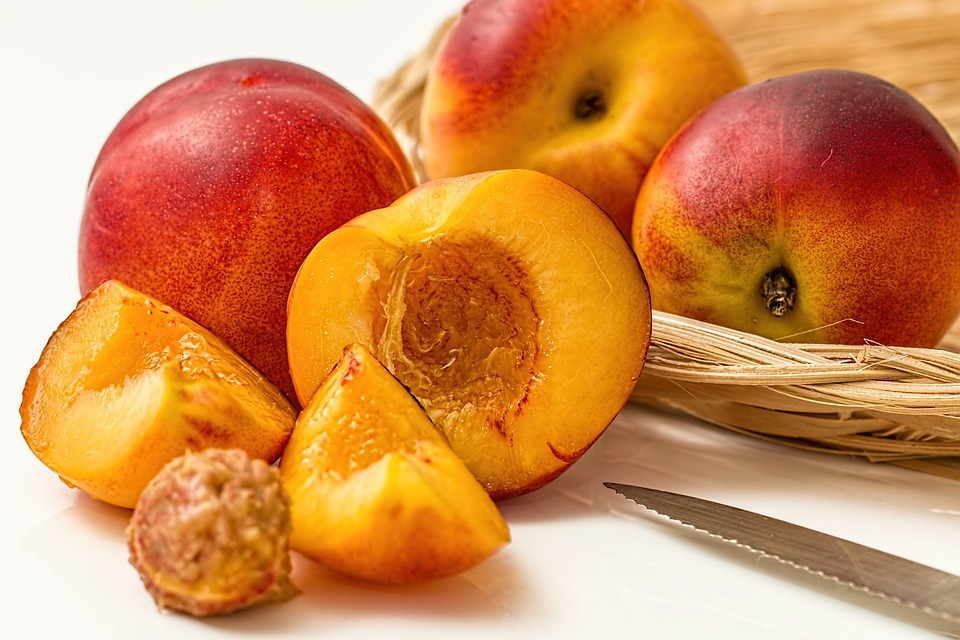Peaches came from the Prunus persica tree, which is a deciduous tree that is native to the region of Northwest China. Today, there are over 300 varieties in the United States alone, and over 2,000 types can be found all over the world. Peaches are identified into three main groups, namely clingstone, freestone, and semi-free-stone. These classifications are based on the way the peach’s flesh clings to the pit. That’s why in this article, we are going to give you a guide on the different types of peaches. So that next time you will do your grocery shopping, you will know which kind you’re buying.
Types of Peaches
- Freestone – This type of peach is where the flesh of the fruit removes easily from the pit, hence the name freestone. Freestone peaches have a firm texture. That’s why they have low levels of juiciness. They also have mild sugar content, they don’t overpower other flavors, and they retain their firmness even when exposed to heat. That’s why freestone peaches are ideal for baking. This type of peach is usually harvested between late May and October. Some of its popular varieties are the Red Top, O’Henry, and Elegant Lady.
- Clingstone – Clingstone peaches are the type of peaches where the flesh of the fruit clings securely to its pit. Clingstone peaches have yellow flesh that turns bright red near the hole, and it usually harvested between May and August. Compared to freestone peaches, the clingstone peaches have a very soft texture, it is juicy, and it has high sugar content. That’s why they are the perfect type of peach to snack on. Popular varieties of the clingstone peach area the red beauty and Santa rosa.
- Semi Freestone – This type of peach is a cross-hybrid of the freestone and clingstone varieties. Semi-freestone peaches have the best of both worlds because they have the most valued qualities of the clingstone and the freestone peaches. It has a high sugar content, it is juicy, and it has a flesh that has the right amount of softness, and it doesn’t cling to the pit.
Freestone Variety
- O’Henry – O’Hentry peaches often ripen during late-summer, and they are known for their thin, evocative skin and firm yellow flesh. It also has a taste that is balanced in sweetness and acidity. O’Henry peaches are often mixed in preserves, drinks, and sorbets.
- Red Top – Red top peaches often ripen at the end of the summer. They are famous for their pink flowers and aromatic leaves. Red top peaches have a mildly sweet and tart flavor.
- Elegant Lady – Elegant lady is popular for their firmness, aromatic smell, and mild acidity. They are often used in baking, canning, and as well as snacks.
Clingstone Variety
- Santa Rosa – Santa Rosa peaches have a subtle yellow flesh with a slight acidity that divergences their sweetness. This type of clingstone peach is often in season between May to August, and they are usually used for preserving and canning. However, they can also be used in salads and baked dishes because they have firm flesh.
- Red Beauty – Just like Santa Rosa peaches, Red Beauty peaches are also in season from May to August. They have a tender and reddish-yellow flesh and almost crimson skin that’s why it’s called Red Beauty.
How to Choose the Best Peaches
Peaches are soft when they are ripe, and they can be highly perishable. That’s why it is best to buy your peaches locally. They can go from rock hard to soft and ripen the next day. That’s why if you don’t have any plans on eating it after you purchase it, it is best to choose a peach that is not that ripe and make sure that it is not bruised.
How to Store Peaches
You can store your unripe peach on top of your kitchen counter single layer at room temperature. Remember that you have to check on them daily to make sure that there is no mold growth. Once it is soft, you can transfer them to your fridge and wait for its ripening process. The process could take about 5 to 7 days.
